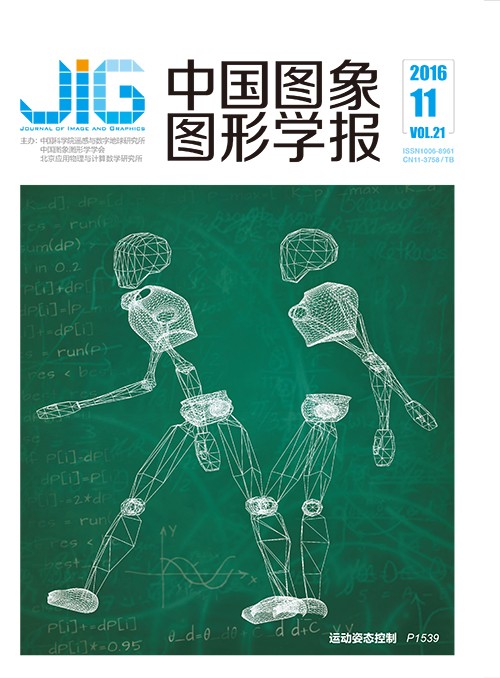
雾天交通场景中单幅图像去雾
摘 要
目的 针对雾天交通场景中通常含有大片天空区域,传统去雾方法在复原这些图像时容易产生光晕、色彩失真等现象。提出一种基于天空区域分割和暗通道先验理论的图像去雾方法。方法 首先提出一种基于最大类间方差法(OTSU)的图像分割算法来自动分离天空区域,然后将天空区域的平均强度值作为大气光值,从而改进场景传输率的估计。结果 本文方法不仅有效地解决了图像去雾后出现光晕和色彩失真等问题,与He Kaiming以及Fattal的方法相比,本文方法去雾后的图像更加真实、自然、平滑。结论 实验结果表明,本文方法能够很好地完成对雾天交通图像的复原,可为道路交通监管提供一种有效的理论基础和技术支撑。
关键词
Haze removal for single traffic image
Xing Xiaomin1, Liu Wei2(1.Wuhan Technical College of Communication, School of Electronics and Information Engineering, Wuhan 430065, China;2.Wuhan University of Technology, School of computer Science and Technology, Wuhan 430070, China) Abstract
Objective Several tiny particulates are suspended in air during poor weather condition (e.g., haze or fog). The color and contrast of the captured picture from image devices are severely degraded because of scattering, thereby consequently affecting visual experience. Haze is a common phenomenon in China's cities and towns, especially in the metropolis. Haze reduces visibility and seriously affects the closed circuit television surveillance system, thereby leading to difficulties in traffic monitoring and increase in traffic accidents. Using traditional methods to remove the haze in traffic image usually results in various problems, such as halo and color distortion. To remove the large sky area in traffic image, this paper proposes a haze-removal method based on sky segmentation and dark channel prior. Method We use the maximum of the top 0.1 percent brightest pixels in the dark channel (as selected by He) corresponding to the original image as the value to the atmospheric extinction coefficient A. Accordingly, the value of A in each channel can be made closer to the maximum pixel value of 255. Resulting image after haze removal can generate color cast or a large number of color spots. According to the characteristics of haze image in traffic scene, we propose a novel algorithm that automatically separates sky regions to optimize the model and thus solve the image distortion of sky region after dehazing by dark channel prior. For sky segmentation, we introduce an OTSU method to complete the task. In our haze removal algorithm, we present the average intensity of the sky as the atmospheric extinction coefficient, and estimate the scene transmission of the sky and the non-sky regions. Then, we combine two parts of the scene transmission as a whole to refine the transmission. This step makes the restored sky region highly natural looking. Result Compared with Fattal's method and He's method, our algorithm obtains better image sharpness and edge details of the recovered image. The distortion of the recovered image is also lower than that of the recovered image by Fattal's method and He's method. In the rehabilitation of the sky region, our algorithm exhibits highly natural looking and smooth resulting image. On the contrary, Fattal's method and He's method show a large number of spots or halos appearing in the sky region. Conclusion The proposed method can effectively restore the traffic haze image. Specifically, no spots or distortions are found in the sky region of the recovered image by our method. The proposed method can also provide an effective theoretical basis and technical support for road traffic supervision. However, our algorithm has the following limitations. The effect of the recovered image is poor when distant objects are under a thick-haze environment. This result is due to the optimization of scene transmittance. The attenuation coefficient of the transmittance (scattering coefficient) is assumed to be constant. However, in the actual atmosphere, the scattering coefficient changes under different weather conditions. Therefore, our future research will incorporate the weather factor into our algorithm to optimize an accurate and robust approach for removing the haze from traffic scene image.
Keywords
haze traffic scene dark channel prior haze-removal image segmentation image restoration haze image formation
|



 中国图象图形学报 │ 京ICP备05080539号-4 │ 本系统由
中国图象图形学报 │ 京ICP备05080539号-4 │ 本系统由